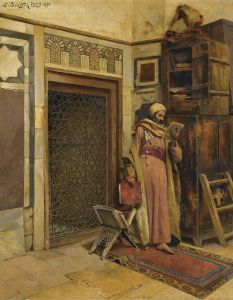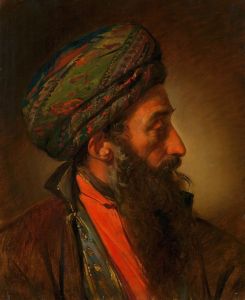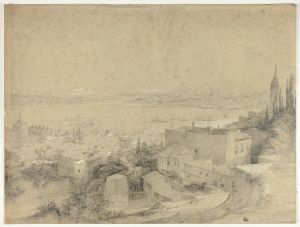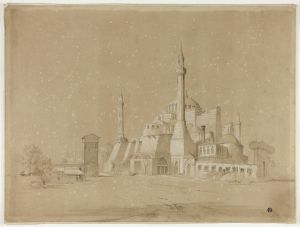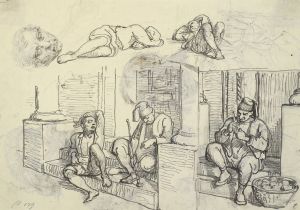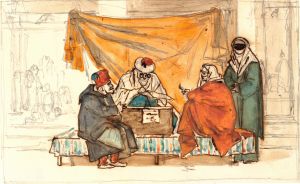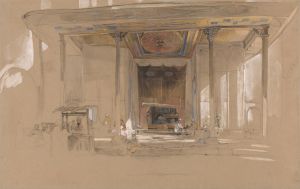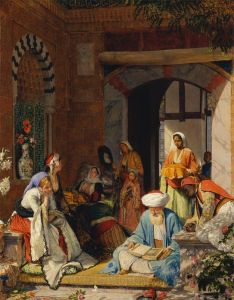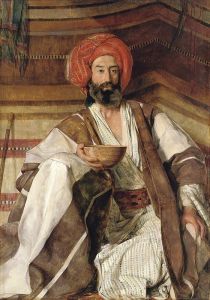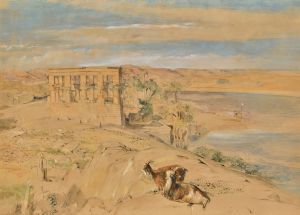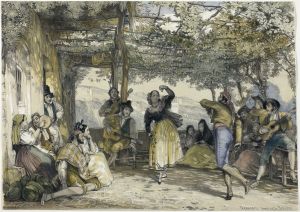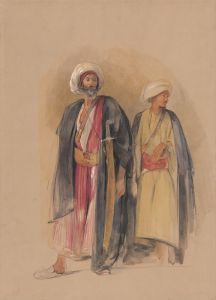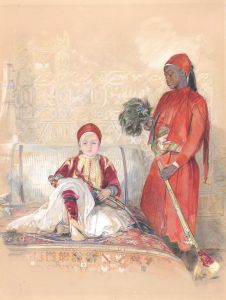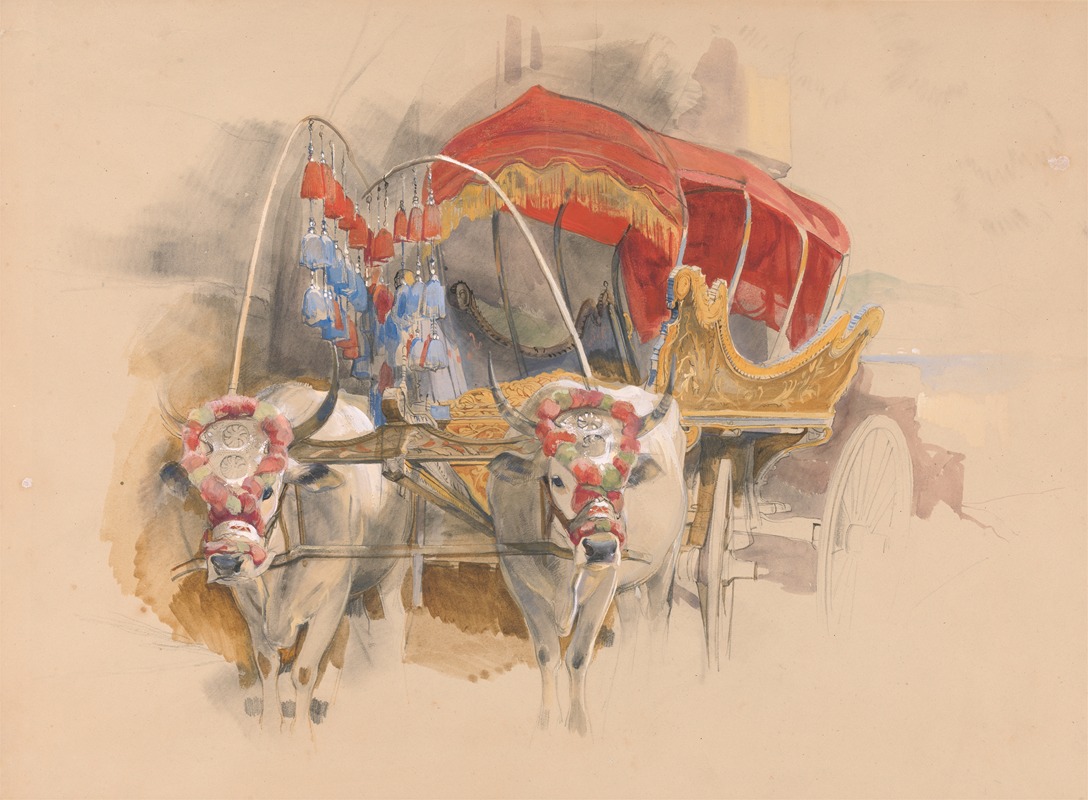
A Turkish Araba Drawn by Two White Oxen, Constantinople
A hand-painted replica of John Frederick Lewis’s masterpiece A Turkish Araba Drawn by Two White Oxen, Constantinople, meticulously crafted by professional artists to capture the true essence of the original. Each piece is created with museum-quality canvas and rare mineral pigments, carefully painted by experienced artists with delicate brushstrokes and rich, layered colors to perfectly recreate the texture of the original artwork. Unlike machine-printed reproductions, this hand-painted version brings the painting to life, infused with the artist’s emotions and skill in every stroke. Whether for personal collection or home decoration, it instantly elevates the artistic atmosphere of any space.
"A Turkish Araba Drawn by Two White Oxen, Constantinople" is a watercolor painting created by the British artist John Frederick Lewis. Lewis, born in 1804, was known for his detailed and vibrant depictions of Orientalist themes, a genre that romanticized the cultures and landscapes of the Middle East and North Africa. His works are celebrated for their meticulous attention to detail and vivid portrayal of the scenes he encountered during his travels.
This particular painting, "A Turkish Araba Drawn by Two White Oxen, Constantinople," captures a moment in the bustling city of Constantinople, present-day Istanbul, during the 19th century. The term "araba" refers to a traditional Turkish cart or carriage, often used for transporting goods and people. In this artwork, the araba is drawn by two white oxen, which were commonly used as draft animals in the region.
Lewis's painting is notable for its realistic representation of the scene, showcasing his skill in capturing the textures and colors of the environment. The white oxen are depicted with great care, highlighting their muscular build and the sheen of their coats. The araba itself is intricately detailed, with visible wood grain and decorative elements that reflect the craftsmanship of the period.
The setting of the painting is Constantinople, a city that has historically been a melting pot of cultures and a significant center of trade and commerce. During the 19th century, when Lewis visited, the city was part of the Ottoman Empire, which had a profound influence on its architecture, culture, and daily life. The painting provides a glimpse into the everyday activities and the diverse population of the city, with figures dressed in traditional Ottoman attire.
John Frederick Lewis spent a significant portion of his career traveling and living in the Middle East, including a decade in Cairo, Egypt. His experiences in these regions deeply influenced his artistic output, leading to a body of work that offers valuable insights into the 19th-century Orientalist perspective. Lewis's paintings are often characterized by their vibrant colors, intricate details, and a sense of tranquility and order.
"A Turkish Araba Drawn by Two White Oxen, Constantinople" is part of Lewis's broader oeuvre that captures the essence of the places he visited. His works are held in high regard and are part of various public and private collections, including major institutions such as the Victoria and Albert Museum in London.
In summary, this painting by John Frederick Lewis is a fine example of 19th-century Orientalist art, providing a detailed and colorful depiction of a scene from Constantinople. It reflects Lewis's keen observational skills and his ability to bring the everyday life of the Ottoman Empire to the canvas with remarkable precision and artistry.






